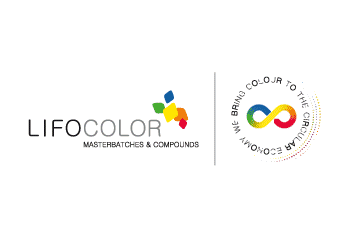Biopolymers: New application possibilities in electronics and electrical technology through radiation crosslinking
Products in the electrical technology and electronics (E&E) industry have to meet high flame retardant standards and often demanding thermal requirements. Polymers available on the market so far do not meet these requirements.
A joint research project, the Fraunhofer WKI, Fraunhofer IAP, crosslinking service provider BGS and other industrial partners has been successful in developing bio-based flame retardants in bio-plastics for the first time. As a result, plastics out of 100 percent bio-based materials could be used in electronics and electrical technology in the future. The processing was tested within the scope of the research project by means of compounding, injection moulding and additive manufacturing.
During the three-year research project, several objectives were in the focus concerning the development of new bio-plastics and bio-composite materials for applications in electronics and electrical technology. Key priorities were to develop a halogen-free flame retardant (additive) that can be used in bio-plastics if possible in low quantities and with low costs, and to clarify to what extent radiation crosslinking is able to further improve the flame retardancy of the material. “In the course of our sub-project on the effects of electron radiation on the new materials, we defined three objectives,” explains Dr. Dirk Fischer, head of application development at BGS. “Through crosslinking of the new bio-based material, we wanted to increase the flame retardant effect on one hand and on the other hand, achieve a bonding of the flame retardant to the biopolymer. In addition, we wished to verify the crosslinkability of biopolymers already available on the market, in particular, in different formulations and using wooden particles. The results with regard to the crosslinkability and the changes in properties arising therefrom make us confident that new applications for bio-based plastics formulations will emerge from this in the areas of electronics and electrical technology,” Fischer goes on to say.
Newly tested: Electron radiation crosslinking bonds flame retardants to bio-plastic polylactides (PLA)
In order to achieve optimal flame retardancy, it is necessary to distribute the flame retardants homogeneously in the biopolymer matrix out of PLA. The bonding with the biopolymer matrix should be achieved through the specially developed reactive flame retardants. As a new procedure for the bonding of the flame retardants to the matrix, radiation with accelerated electrons (electron radiation) was used. This non-thermic process has been used for many years to improve the properties of bulk plastics and technical plastics and is a standard technique in numerous industries; radiation crosslinking, however, has received little attention so far in the area of bio-plastics. The properties of the polymers are modified here by triggering controllable crosslinking and bonding reactions via the radiation dose. In the tests, an additive proved to be effective where the crosslinking reaction of the PLA demonstrably outweighed the degradation of the polymer through irradiation. Other additives were also tested extensively. “The results improve the level of knowledge about the additives partly used for the first time as well as the processes in the plastics processing,” explains Fischer. “In particular, we were able to demonstrate through this the effects of the irradiation on the crosslinkability of these new bio-based formulations.”
 | |
Project team: |
Compounding with bio-PA: Testing flame retardants and radiation crosslinking
In addition, flame-protected formulations were developed in the course of the research project on the basis of bio-polyamides (PA) for injection moulding, and the crosslinkability was examined for the first time under the influence of electron radiation. “It showed that the bio-polyamides used here, namely PA6, PA10 and PA11 can be very effectively crosslinked with the help of a crosslinking additive and have no disadvantages whatsoever compared to conventional fossil-based plastics,” according to BGS project manager Fischer. The positive effect of adding wooden particles to the flame retardant performance could also be demonstrated. As in previous tests with PLA and PBS, the heat release rates were reduced through the addition of wood while shortening the ignition times simultaneously. The promising results are the subject of further research activities. “The crosslinking of the developed materials results in a new properties profile. In the case of nearly all the PA-based formulations, we were able to document an increase of tensile strength and the elastic modulus under tension, with reduction of the notched impact strength,” explains Fischer. “The project has also proven that the production of crosslinkable formulations and their processing shows many parallels to well-known conventional plastics. Bio-based plastics can therefore replace conventional plastics in many applications and their properties spectrum can be further optimised through radiation crosslinking. This not only opens new possibilities in the areas of electronics and electrical technology, but also creates new areas of application in the automotive industry – there is enormous potential here.”
Funding
Project title: Development of new applications for bio-plastics and bio-composite materials in electronics and logistics using halogen-free flame retardant systems
Funding bodies: Federal Ministry of Food and Agriculture (BMEL)
Promoters: Fachagentur Nachwachsende Rohstoffe e. V. (FNR)
Project partners
- Fraunhofer WKI
- Fraunhofer IAP
- Clariant Plastics & Coatings (Deutschland) GmbH
- Linotech GmbH
- Hesco Kunststoffverarbeitung GmbH
- Kabel Premium Pulp & Paper GmbH
- Hager Electro GmbH
- Rettenmaier & Söhne GmbH
- Georg Utz GmbH
- autor:
- BGS Beta-Gamma-Service GmbH & Co. KG.




















